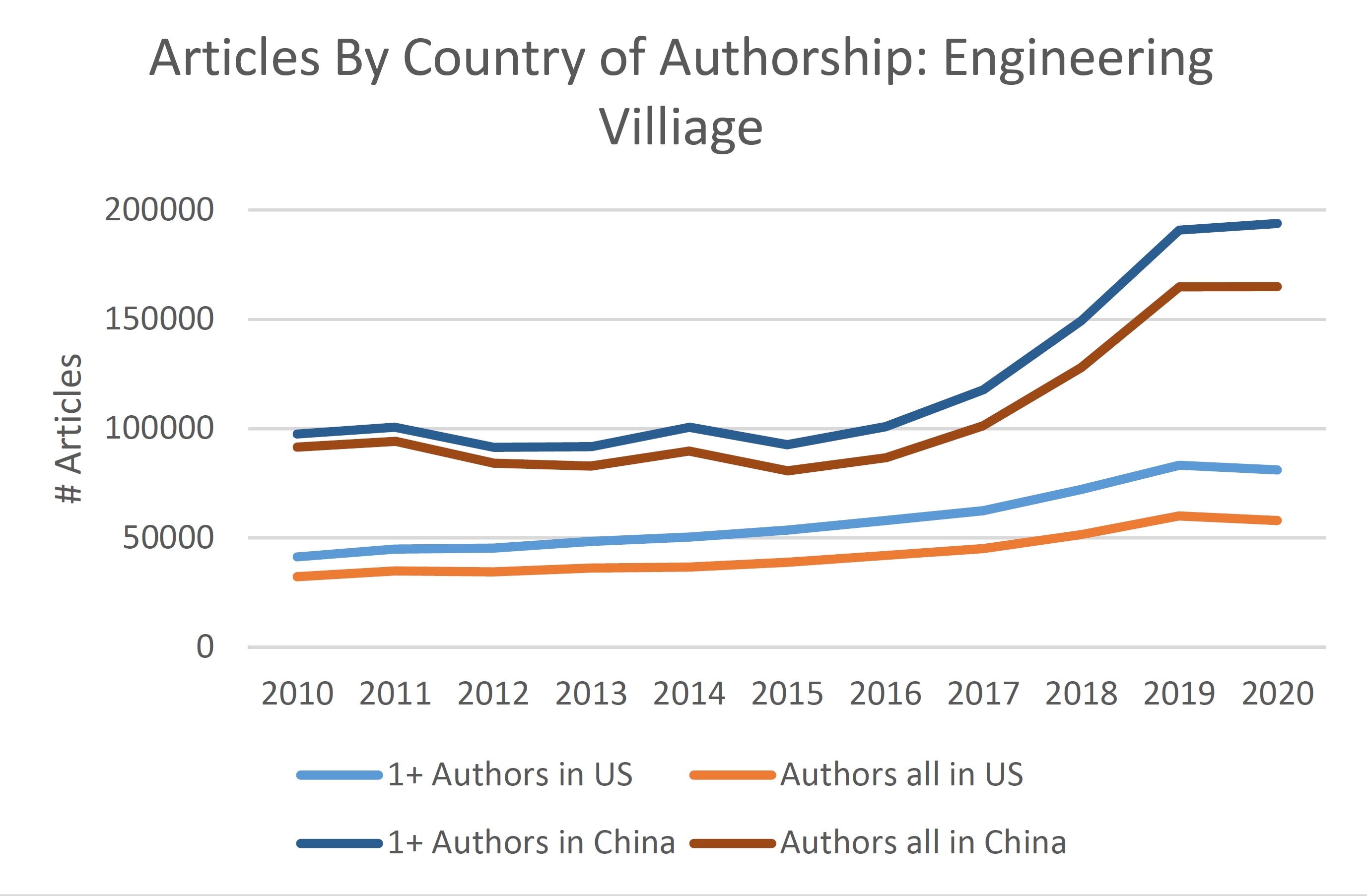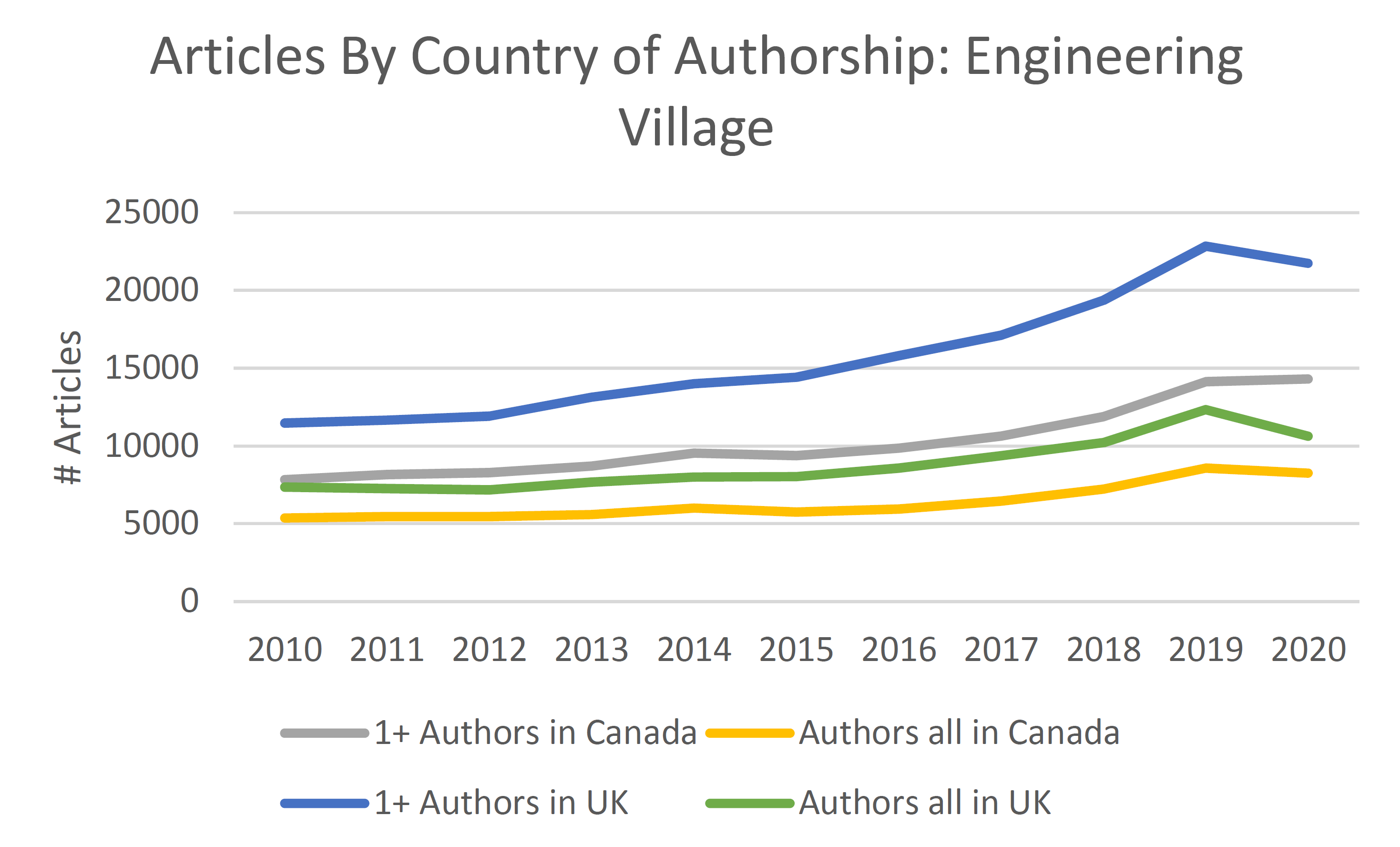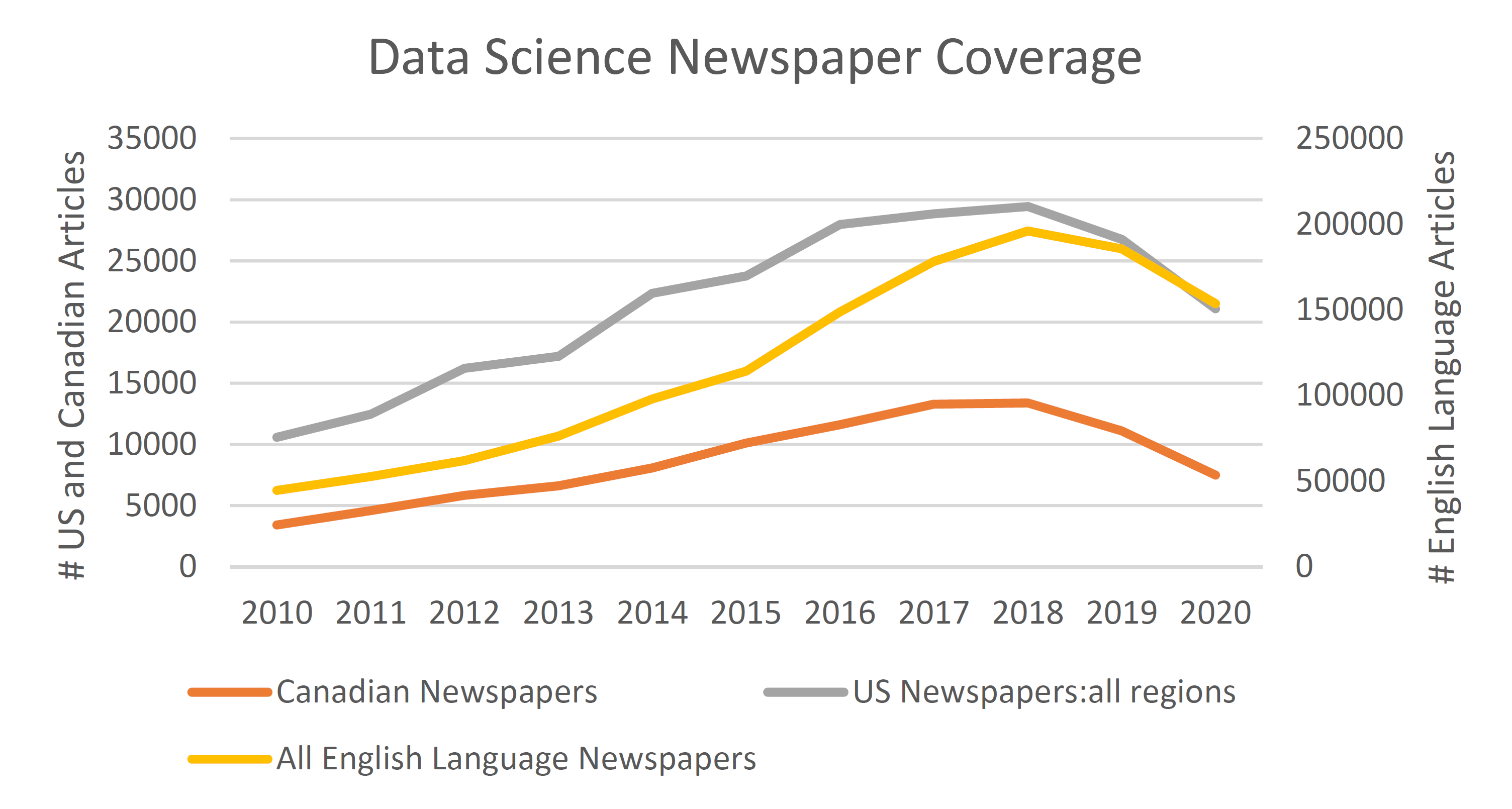Before reading, find part 1 of this trend here
Given that these statistics include papers authored by researchers in any region, and COVID-19 had differential impacts on countries due to different experiences with lockdowns and infection rates, we further broke down the statistics by region using information on where each paper’s authors were located (i.e., location of their affiliation) to determine if there were differences in the publication patterns across countries such as Canada, China, the US, and the UK that experienced significant differences in the severity of the pandemic locally. For example, the number of cases per 100,000 individuals in Canada stands at 3723, while the comparable rates
for the US, UK, and China are approximately 10,000, 6761, and 8, respectively

This figure shows a robust growth in the number of papers in AI and data science for both the US- and China-based authors from 2010-2019. However, the US-based authors, which includes authors from the country with the highest infection rate of the four countries, experienced a decline in overall publications regardless of the regional measure employed. Specifically, the growth rates for the 1+ Authors in US group and the Authors all in US group went from 15.2% and 16.5% in 2019 to -2.7% and -3.6% in 2020 respectively. China, on the other hand, experienced the lowest infection rate of the four countries we examined, and groups that had an author in China experienced a slightly positive growth in the overall number of their publications. Although this increase fell far below what would have been predicted based on recent years’ levels. In particular, the growth rates for the 1+ Authors in China and Authors all in China groups went from 27.9% and 28.7% in 2019 to 1.5% and 0.1% in 2020 respectively.

This Figure shows that similar patterns emerge for the UK and Canada. As is the case with the US and China authored papers seen in the previous figure, there is a break in publication trends for UK and Canada-affiliated papers that coincided with the pandemic year. Moreover, it is clear that the impact was larger for the UK groups which had a higher infection rate. The growth rates for the 1+ Authors in UK group and the Authors all in UK group went from 17.9% and 20.8% in 2019 to -4.9% and -13.8% in 2020 respectively.
The growth rates for the 1+ Authors in Canada and Authors all in
Canada groups, in comparison, fell from 19.0% and 18.8% in 2019 to
1.3% and -3.7% in 2020, respectively.
Overall, the data supports a case for a COVID-19-related disruption
in AI and data science related late-stage research. Moreover,
it would appear that, while in normal times there may be a slight
advantage to having teams of researchers working within the same
geographical area, during the pandemic, there was likely some
productivity gains to have diversification of team members across
regions due to regional variations in lockdown measures and infection
rates.


